SUN AN’ SOUL - DREAM AN’ ROME
ETRUSCAN NATIONAL MUSEUM
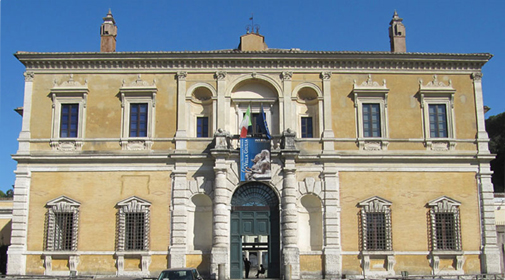 |
| Etruscan National Museum, - click to enlarge |
The Etruscan National Museum is housed in the splendid villa that Julius III, Pope from 1550 to 1555, built according to the Renaissance style of the suburban villa, by Vignola, with the help of Giorgio Vasari and Bartolomeo Ammannati.
The villa is divided into a main body followed by two other bodies enclosing a nymph.
The Museum, the most important Etruscan museum in the world, exhibits findings coming from the cities of southern Etruria.
Like many Roman museums the amount of finds, most of which is of exceptional attractiveness, is overabundant. The visitor who wanted to linger even for a short time to observe each of them, resistance to part, would take not less than a day. As in other similar cases, not to disperse the attention of those who follow us and want to enjoy the museum, we focused on those works that are masterpieces of incomparable attractiveness.
The first we meet in the rooms dedicated to the city of Cerveteri is the Sarcophagus of the Spouses which portrays the noble spouses in the happy time of the banquet.
The artist has depicted with extreme care every detail of their hairstyles, giving a vitality that seems to accompany them in the afterlife.
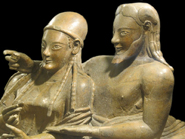 |
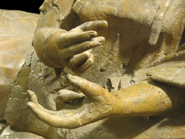 |
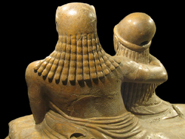 |
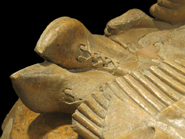 |
| Sarcophagus of the Spouses - click to enlarge |
From Cerveteri let pass in Pyrgi (which was the port of Cerveteri), where in 1957 the great archaeologist Massimo Pallottino brought to light a sanctuary consisting of two temples, the most recent of which, named A temple, dates back to 470-460 BC.
In the façade of this temple stands the high-relief representing the myth of the Seven against Thebes.
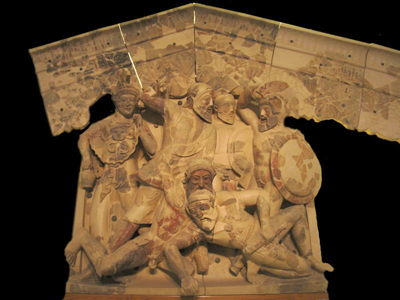 |
| Seven against Thebes - click to enlarge |
The myth brought to the stage by the great tragedian Aeschylus (525-456 BC) and taken up by various authors such as the Latin Papirius Statius (40-96 AD), tells the story of the twins Eteocles and Polynices, sons of Oedipus king of Thebes, who at his death left them heirs to the throne, with the stipulation that each of them should reign a year in turn. Eteocles the first to be born began to reign, but at the expiration of the year he did not want to relinquish power to the twin.
Polynices then fled to Argos, helped by King Adrastus returned to Thebes, whose walls had seven gates, accompanied by six kings to attack each door. Among the six kings who marched on Thebes were Capaneus despiser of the gods, against which intervenes Zeus himself that in the frieze retains Polyphontes, defender of Thebes'gate attacked by Capaneus and strikes the latter.
Another king supporter of Polynices was Tideo protected by Athena. Tideo defeated his opponent Melanippus, but was mortally wounded in the clash. Athena runs to his aid bringing filter of the immortality, but in the meantime Amphiaraus, enemy of Tydeus, throws at Tideo's feet Melanippus head, on which the king pounces devouring the brain.
Athena horrified, withdraws and leaves Tideo to die.
Meanwhile, the twins had clashed at one of the seven gates of Thebes killing one another.
In this extraordinary frieze you can appreciate the incredible mastery of Italian restorers, not at all considered the best in the world.
Always come from the temple the antefixes of exceptional workmanship. The antefixes were at both ends of the roof support beams, providing both protective (against bad weather and fires), and decorative.
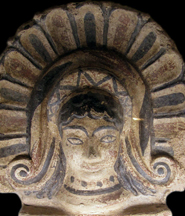 |
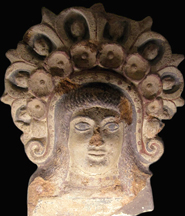 |
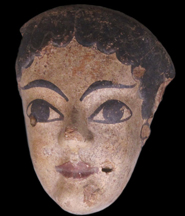 |
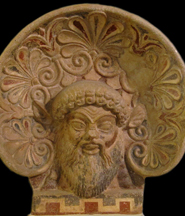 |
| Antefixes of A Temple - click to enlarge |
From the sanctuary of Pyrgi also comes the memorable portrait of Leucotea,
daughter of Orchomenus king of the Persians.
Continuing our visit we come to the city of Falerii, where we find the great temple named “Scasato”, with three unforgettable statues: that of Apollo that of Juno and that of Mercury.
As befits a large temple also the antefixes are spectacular.
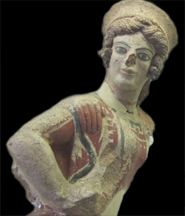 |
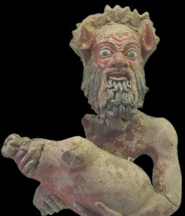 |
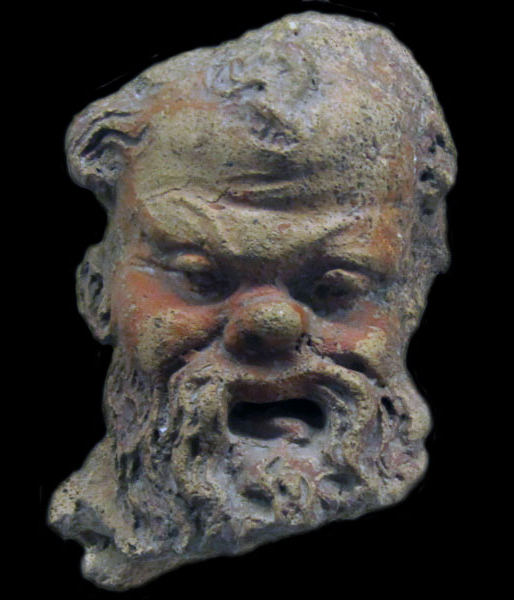 |
| Antefixes of Scasato temple - click to enlarge |
A few more steps and here we are at the city of Veii, with its memorable temple.
On the roof peak were the statues of the famous Apollo of Veii, flanked by Hercules, who, struggling for one of his labours, kills a deer with golden horns. The third statue depicts Latona, portrayed with her son, the little Apollo, in her arms.
Among the statues there was also Mercury, of whom has survived only the impressive head.
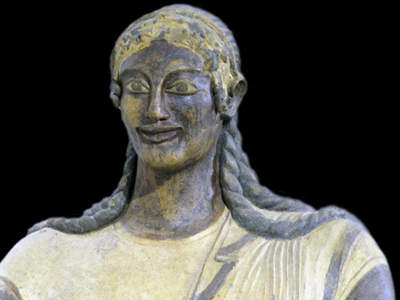 |
| Apollo of Veii - click to enlarge |
The author of the statues and the whole decoration of the temple is identified in the heir of Vulca, the great artist to whom Tarquinio Prisco, the Etruscan king of Rome, entrusted the construction of the statue of Jupiter in the Capitoline temple dedicated to the god. At the heir of Vulca, Tarquinius Superbus commissioned the chariot that soared on the Capitoline temple of Jupiter.
In the decoration of the temple, among other statues, one can see that of the Greek hero Bellerophon.
Do not miss the antefixes and painted terracotta slabs.
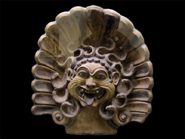 |
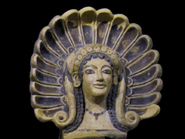 |
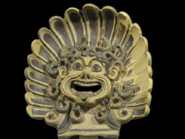 |
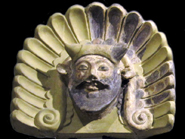 |
| Antefixes of Veii Temple - click to enlarge |
From funerary objects of the Etruscans tombs were saved jewelry, metal objects and hundreds of vessels, many of them, inspired by Greek myths, would require each of its narrative.
Just as a a memory we propose these few vessels.
Of course we start from the very celebrated Eufronio crater, representing the Sarpedon myth.
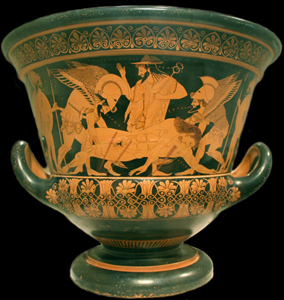 |
| Eufronio crater - click to enlarge |
Following another crater where we see Hercules rushing against the centaur Nessus who tried to kidnap his wife Deianira;
in the following amphora appears Theseus slaying the Minotaur.
In this crater we show, Dionysus appears with a horn in his hand at the center of a procession of satyrs.
On the other side of the same pot it is painted Hercules with Minerva, who leads four horses against a warrior.
In this amphora Hercules plays the lyre with at his flanks Minerva and Mercury.
In this cup appears again Hercules fighting with the Amazons, while the lizard is the painter's signature.
A quote deserves the Bucchero, a terracotta specialties of the Etruscans, which as we see is worked so as to appear a metal. And finally the famous dish with parade elephant, realized on the occasion of the triumph of consul Curio Manius Dentato (275 BC), winner of Pyrrhus, King of Epirus, at that time considered the greatest leader in the world.
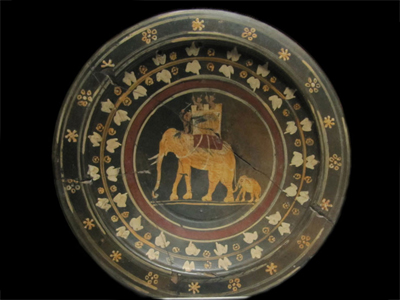 |
| Parade elephant - click to enlarge |
As we mentioned what we have shown is a small part of the finds exhibited in the museum.
In particular among the hundreds of vessels someone could rightly complain that there are more beautiful, but as mentioned, our aim is just a memory.
back |

